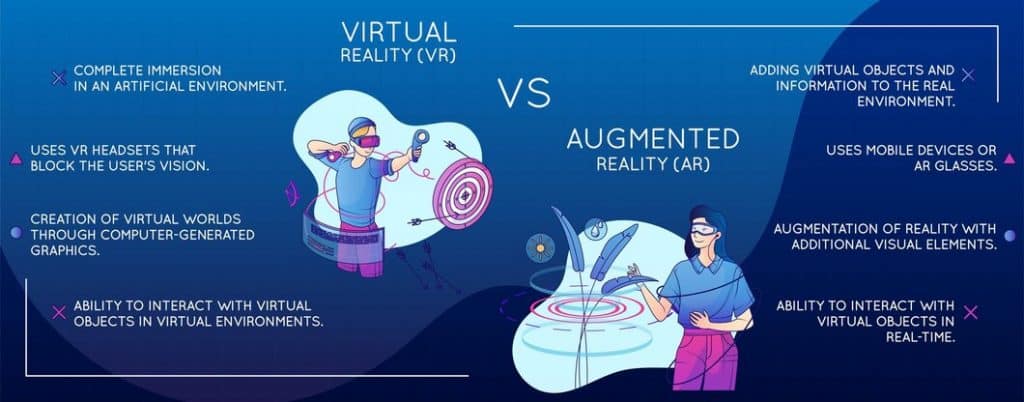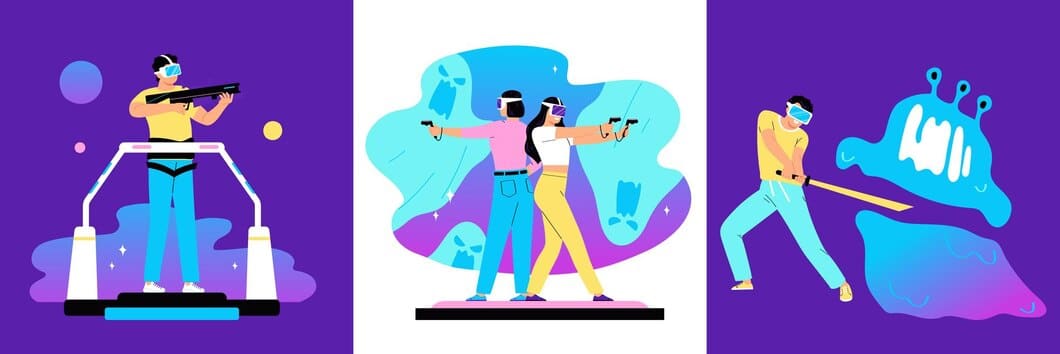Augmented Reality(AR) and Virtual Reality(VR) are immersive technologies that change the way people interact with the digital world. Similarly, AR and VR have a notable effect on the web and mobile app development industry. In this article lets see how it
Augmented Reality(AR)
- Definition
AR augments the user’s perception of reality by superimposing digital information on real-world environments.
- User Interaction
Users can see both the physical and digital worlds at the same time. AR is typically accessed via devices such as smartphones, tablets, smart glasses, or AR headsets.
- Applications
Gaming, navigation, education, retail(try-before-you-buy), healthcare(surgical navigation), and marketing are just a few augmented reality applications.
- Technologies.
AR technologies include marker-based AR(recognition using physical markers), markerless AR (recognition using computer vision and object recognition), and location-based AR(recognition using GPS and geolocation).
- Popular Platforms
Platforms such as ARCore (Android) and ARKit (IOS) allow developers to create AR experiences for mobile devices.
Virtual Reality (VR)
- Definition
VR isolates users from the physical world by immersing them in a completely synthetic, computer-generated environment.
- User Interaction
VR typically necessitates the use of specialized hardware, such as VR headsets. Users are completely immersed in a virtual world, with which they can interact using controllers or other input devices.
- Application
VR is used in gaming, simulations, training(for example, flight and medical procedures), virtual tourism, and collaborative workspaces.
- Technologies
VR technologies include motion-tracking headsets, hand controllers, and, in some cases, external sensors for room-scale experiences. 3D modeling and computer-generated graphics are frequently used to create VR content.
- Popular Platforms
Some of the popular VR platforms include the Oculus Rift, HTC Vive, PlayStation VR, and Valve Index, each of which provides a distinct VR experience.

Considerations and Challenges
- Hardware Requirements
AR frequently makes use of devices that users already own (e.g., smartphones), whereas VR necessitates the purchase of specialized hardware.
- User Experience
AR improves the user’s perception of reality, whereas VR creates a completely immersive artificial environment. The intended user experience should be taken into account.
- Development Platforms
For mobile AR experiences, developers can use AR development kits such as ARCore and ARKit. VR development necessitates the use of platforms and SDKs tailored to the chosen VR hardware.
AR and VR are both rapidly evolving, and their applications span a wide range of industries. Developers who want to create AR or VR experiences should keep up to date on the latest hardware, software, and design principles in these immersive technologies.
Sreyas is a prominent software and mobile app development firm, boasting extensive expertise in UI/UX design. Our global presence allows us to offer a comprehensive range of services, including data migration, database management, web hosting, infrastructure management, and more to clients worldwide.







